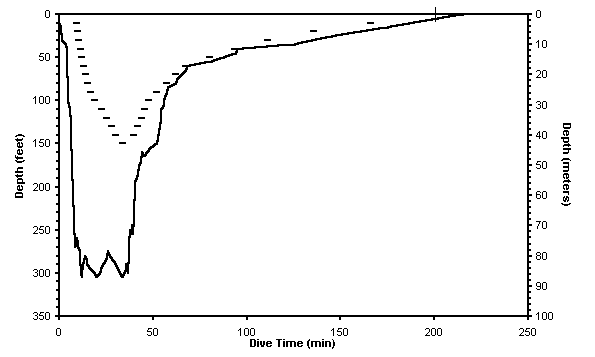Daily Log Report for
12
May 1997
Submitted by Richard Pyle
The film crew left early this morning to go back to Blue Holes to shoot general reef scenes, and to work directly with Jack. Lisa, John, Pat and I spend most of the day at the marine lab, sorting and repairing bits of gear, updating yesterday's web page log report, and otherwise working at a leisurely pace. Shortly before 2 p.m., the four of us, along with Lori Colin and our boat driver Emilio, loaded the boat and headed back to our favorite spot at Augulpelu reef. We originally planned a short dive to our usual terrace at 300 feet, but we were finding so many new fishes, that we stretched it out quite a bit longer than originally expected. Pat went deeper than us with his rebreather, but didn't stay as long. During this dive, I sent a bag full of rocks to the surface with a lift-bag, which Lori & Pat will examine for invertebrate species of interest. I also placed a trap for mollusks that we will recover later.
During the longer-than-expected decompression, Lisa joined up with us and took some pictures. Later, I built a make-shift checker board in the sand with branches of dead coral. Using different-colored bits of coral and shells, John and I tried to play a game to help pass the time. Unfortunately, neither of us could remember the rules and some of the shells we used for our "checkers" were quite alive and kept crawling away, so we abandoned the idea.

Tomorrow, we will return to the Blue Holes with the film crew.
